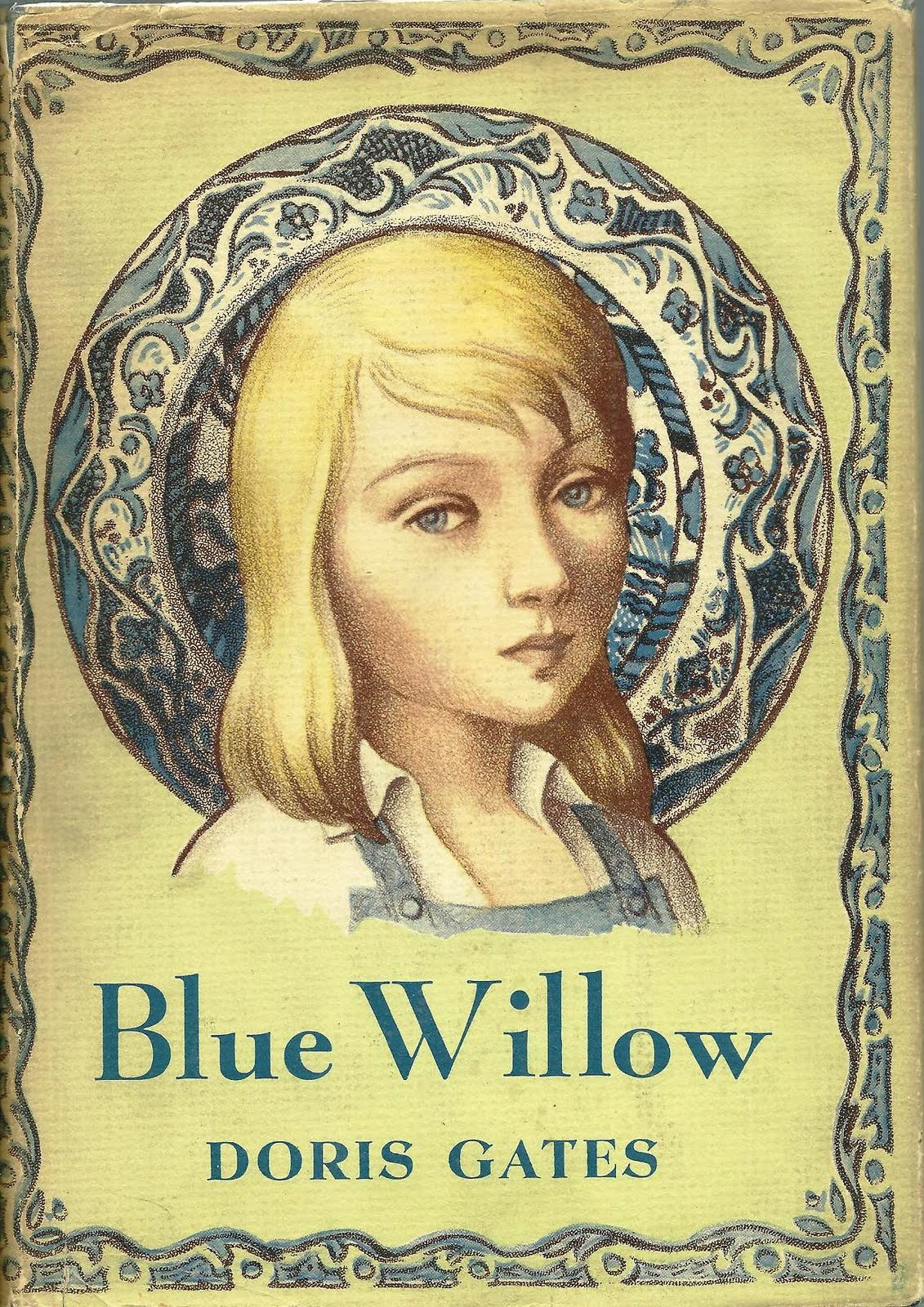Blue Willow by Doris Gates was a 1941 Newbery Honor Book. Between 1930 and 1940, Gates worked as a children’s librarian in Fresno, California, where she became familiar with many children of migrant workers during the Great Depression. One notable aspect of this book is that it is considered to be, if not the first, then one of the first realistic “problem” stories about a child. In 1945, author Howard Pease listed Doris Gates among only three children’s authors he knew of who had written “a story intimately related to this modern world, a story that takes up a modern problem and thinks it through without evasion.”

Blue Willow is about Janey Larkin, a ten-year-old girl who has spent her life moving from place to place as her father follows the work. “The words ‘no work’ always meant a move to another place.” This time, the Texas Dust Bowl has driven Janey’s family to the San Joaquin Valley in California.
Janey’s willow plate belonged to her great-great grandmother. It is Janey’s link to the past, and a symbol of the hope that someday she and her parents might be able to stay somewhere “as long as they want to” instead of only “as long as they can.” The plate “meant to her what a doll might have meant if she had had one.” It goes with the family wherever they move, but is never unpacked because they haven’t lived in one place long enough or in a house with a fitting spot for a precious heirloom to hang.
Most adult readers will guess that this story ends with the Larkins having finally found their “as long as we want to” home. What I find important about this story is the peek into a time that may seem like ancient history to many of us, and certainly will to our children. I frequently struggle with the seemingly impossible – communicating to my students that the lifestyle we take for granted in America exists only in a small part of the globe in a tiny slice of human history. How can I make this real to them? Stories!
I can’t contrive a situation where young children can experience moving to a new town with only what possessions will fit in their car, taking up residence in a one-room shack where they must hope no one will notice they’re living before it’s time to move on. Few parents are likely to allow me to pull the back seat out of their car and use it for their child’s bed indefinitely. I don’t know any ten-year-olds who have to hang out the laundry before they can go play, and I’ve never been acquainted with a child who longed to go to school because the opportunity of regular attendance has been denied them. Doris Gates knew these children. Her story can do this impossible task for me.
Janey is used to being lonely and worrying about work, money, and having enough food. But Gates didn’t write this story as a platform for decrying hardship. It’s a story of beauty in adversity, friendship, neighbors helping neighbors, strangers helping strangers, and hope.
Because of Larkins’ itinerant lifestyle, there are some things Janey hasn’t had the opportunity to learn. As Janey and the neighbor girl Lupe become acquainted, Lupe unconsciously teaches Janey how to accept friendship and how to be a friend. She also teaches Janey how to graciously accept graciously offered gifts. Lupe is also a model of a kind of empathy unfamiliar to Janey. “It was wonderful how Lupe could put herself in somebody else’s place. Something told Janey that she would always be lucky with a friend like Lupe.”
Books are not the center of the story, but they are never far from it. Early in the book, we learn that Janey’s Dad requires her to read two pages of Scripture a day. “Dad believed there were some things second only to food and shelter in one’s life. Reading was one of them. . . It didn’t seem strange to her that she should be using the Bible as a text book. It was almost the only text book Janey had ever known.”
At the county fair, Janey visits the library booth. She has never before seen and handled such beautiful, new books. The experience stays with her throughout the story. The highlight of Janey’s time in the school for migrant workers’ children is the day two women from the library pull up to the school with a truck full of discarded books which they leave for the school. The truck isn’t as glamorous as a bookmobile, but the effect is the same. That day, Janey discovers King Arthur.
I suspect that, in the same way Gene Stratton-Porter inserts herself into her stories as The Bird Woman, Doris Gates is one of those library ladies. She is doing her part, in the sphere of influence she’s been granted, to expand the imaginations of children whose lives are narrowed by poverty. Like Gates, we will never know how many lives will be touched when we share true and wholesome stories with the children within our reach.
Janey’s willingness to give up the willow plate for the good of the family, sets in motion a series of events that bring back the plate and more than she had ever hoped for. When she comes home from school one day to find the Blue Willow plate sitting on the mantlepiece, she knows they have found a place they can stay, “As long as we want to.”
One Comment
Comments are closed.